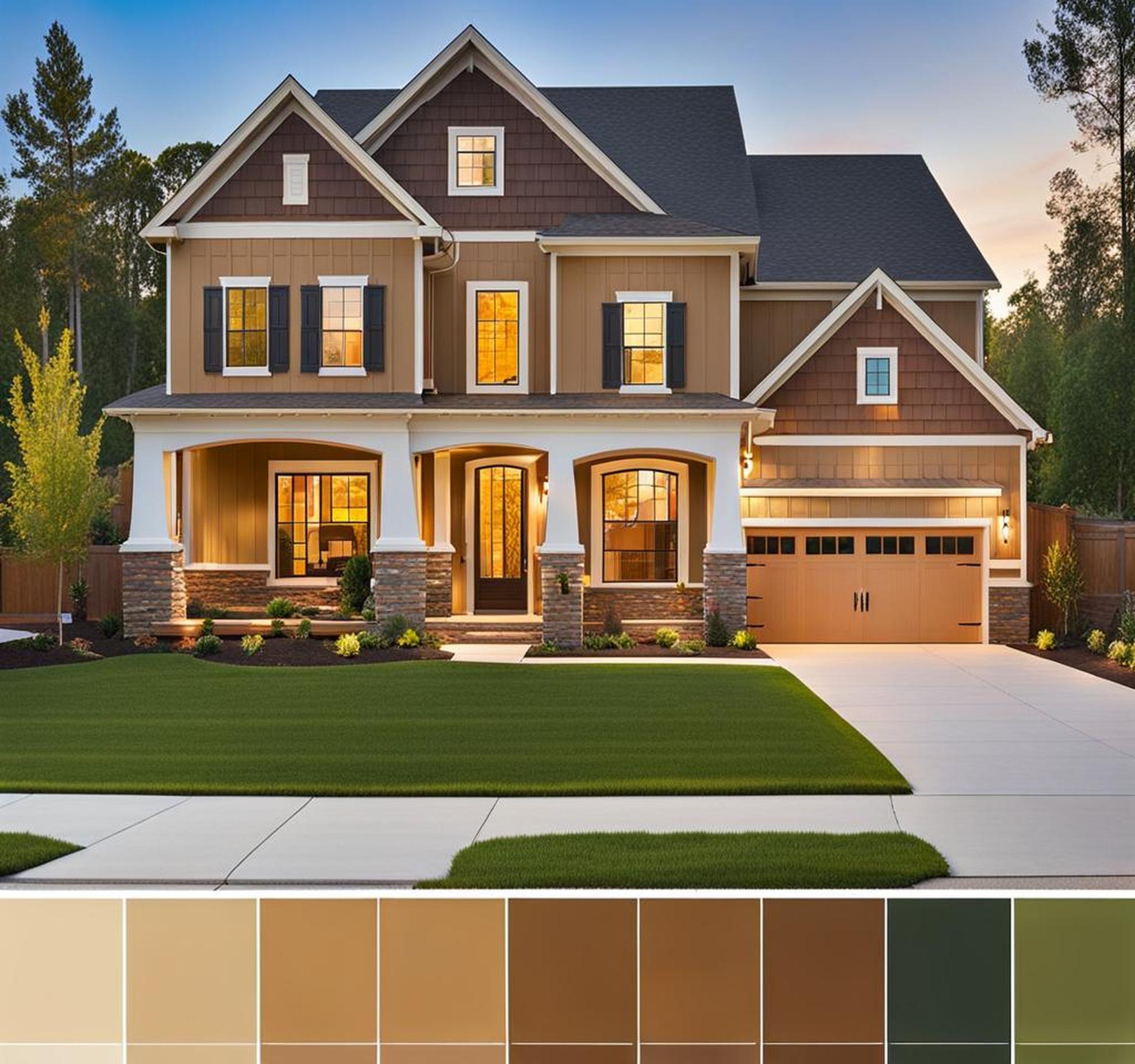Choosing exterior paint colors for your home is an exciting way to put your own personal stamp on your property. For tan or beige houses, the right color scheme can take your curb appeal to the next level. Vibrant, unexpected colors paired with traditional tan exteriors create visual interest and give your home a stylish edge over neighboring properties.
Thoughtful use of color not only makes a design statement, but also enhances your home’s architecture, complements surrounding landscape features, and coordinates with the overall look of your community.
Benefits of Thoughtful Exterior Color Schemes
Upgrading your home’s exterior colors does more than just improve curb appeal. It also provides other valuable benefits:

- Increased Home Value – A well-designed, welcoming exterior can boost your home’s value by making a great first impression on potential buyers.
- Reflects Your Personality – Vibrant colors let you put your own creative stamp on your home.
- Complements Architecture – The right colors can accentuate your home’s best architectural features.
- Enhances Landscaping – Colors should coordinate with the tones and textures of your exterior plantings.
Putting thought into how colors work together creates a cohesive, polished look that says your home is well-cared for and designed with intention.
Know Your Home’s Architecture and Surroundings
Before choosing colors, take time to note your home’s architectural details so you can select shades that work together. Important factors to consider include:
- Architectural Style – Enhance your home’s style instead of clashing with it. For example, bright colors suit a cottage or craftsman, while traditional styles call for classic color combinations.
- Roof and Trim – Roofing and trim materials should complement your color palette. For instance, avoid selecting a cool tone roof for a warm brick exterior.
- Landscape Features – Coordinate exterior colors with colors found in your plantings, stonework, and yard structures.
- Neighboring Houses – Maintain a cohesive look by considering surrounding homes’ color schemes.
Choose a Versatile Neutral Backdrop
For big areas like siding and trim, neutrals like tan, beige, gray, and white work well. They provide flexibility to layer on accent colors. Consider:
- Tans and Beiges – Warm, welcoming neutrals that pair well with many colors.
- Off-Whites – Crisp and fresh; avoid bright white or yellow tones.
- Grays – Sophisticated mood; cool grays recede, warm grays stand out.
- Color Intensity – Lighter tints look airy and bright. Deeper shades feel bold and moody.
Test out swatches at varying intensities to find the right balance for your home’s style.
Add Pops of Color Strategically
Use vibrant accent colors to create visual interest against your neutral backdrop. Effective places to showcase bold colors include:
- Doors and Shutters – Make an eye-catching statement at the main entryway.
- Flowerboxes and Pots – Incorporate seasonal colors with annuals and perennials.
- Accent Siding – Try a bold color on gables, bay windows, or bump-outs.
Recommended Accent Colors
Some top vibrant shades for tan homes include:
- Vibrant: Crimson red, cobalt blue, golden yellow
- Subdued: Sage green, navy, charcoal gray
Select Exterior Materials to Complement Colors
Material choices like siding, roofing, and trim impact how colors appear. Consider:
- Siding – Brick, stone, wood planks, vinyl, fiber cement
- Trim – Painted or natural metals like copper and galvanized steel
- Roofing – Asphalt, tile, slate, and metal come in varied hues
Your local home improvement store can show material samples paired with color swatches.
Test Paint Color Samples at Different Times
View large paint swatches outside during different times of day before fully committing. Lighting conditions change how colors appear. For accurate results:
- Check colors in morning, noon, and afternoon light.
- Compare overcast days versus sunny days.
- Use at least 8-inch square paint swatches and siding samples.
Avoid Common Mistakes
When revamping your exterior color scheme, steer clear of these issues:
- Too many colors competing for attention
- Colors that clash with architectural style
- Forgetting to coordinate with landscaping
Stick with 2-3 colors maximum for a harmonious look. Neutrals on big areas allow bold accents to pop.
A thoughtful, vibrant exterior color scheme makes a stylish statement and sets your tan house apart. Consider your home’s architecture, surroundings, materials and accent areas when planning complementary colors. Test out combinations at different times of day before committing. With creativity and the right balance of color, you can refresh your home’s curb appeal and give your tan house an exciting new look full of personality.
Use these tips to inspire your own unique exterior color palette. Showcase your style with color accents that enhance your tan home’s inviting ambiance. With so many creative possibilities, you’re sure to find a color scheme that packs visual impact and makes your house feel like your own personal work of art.
